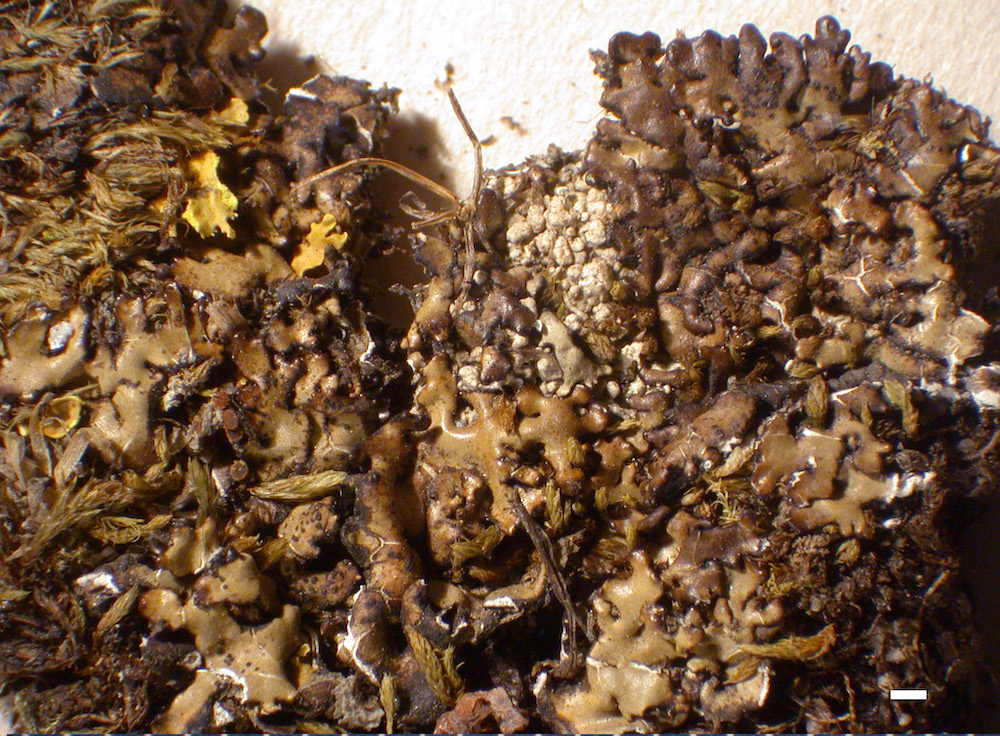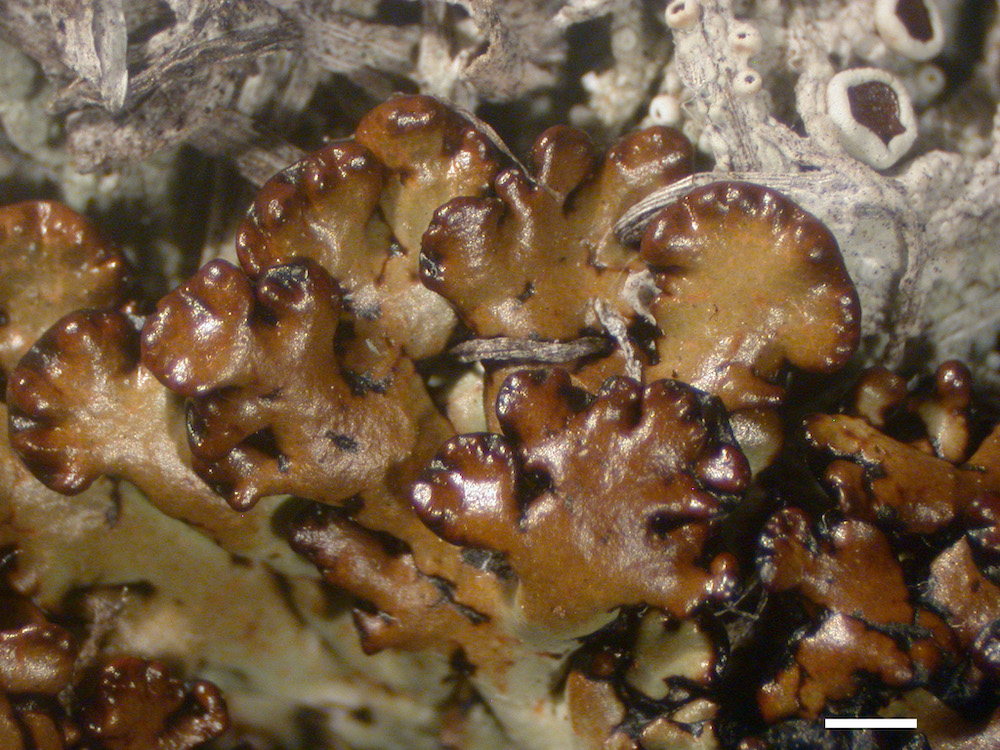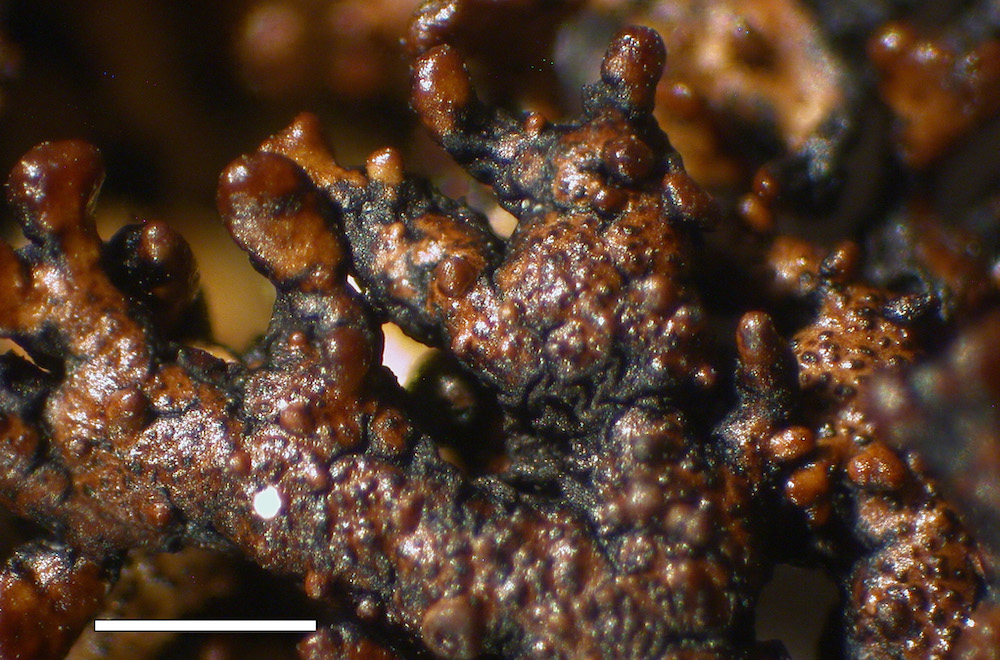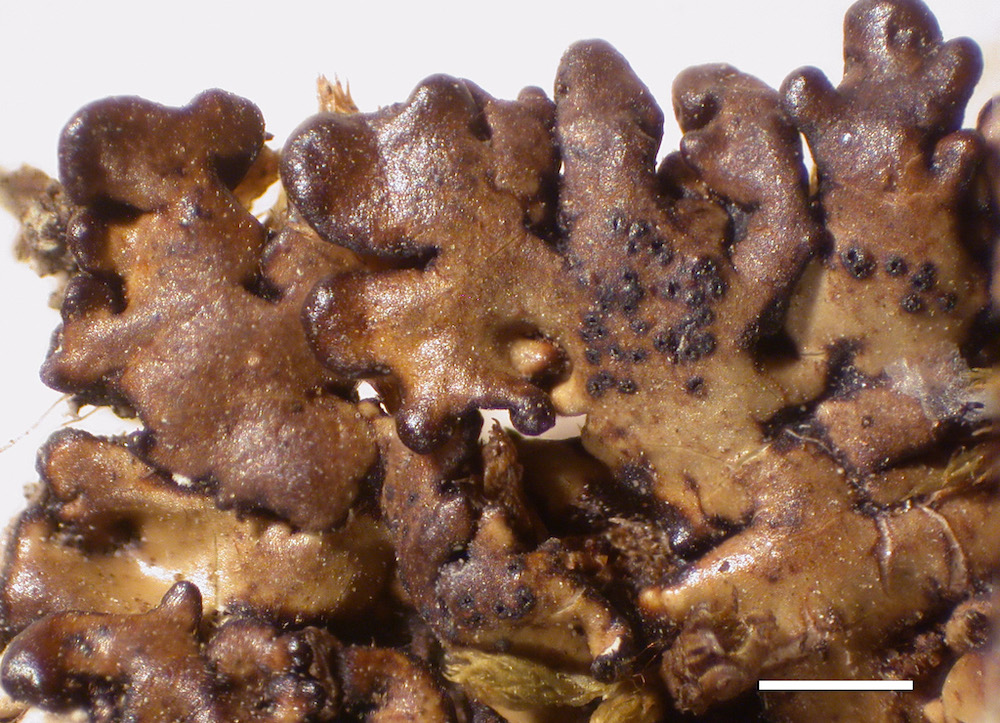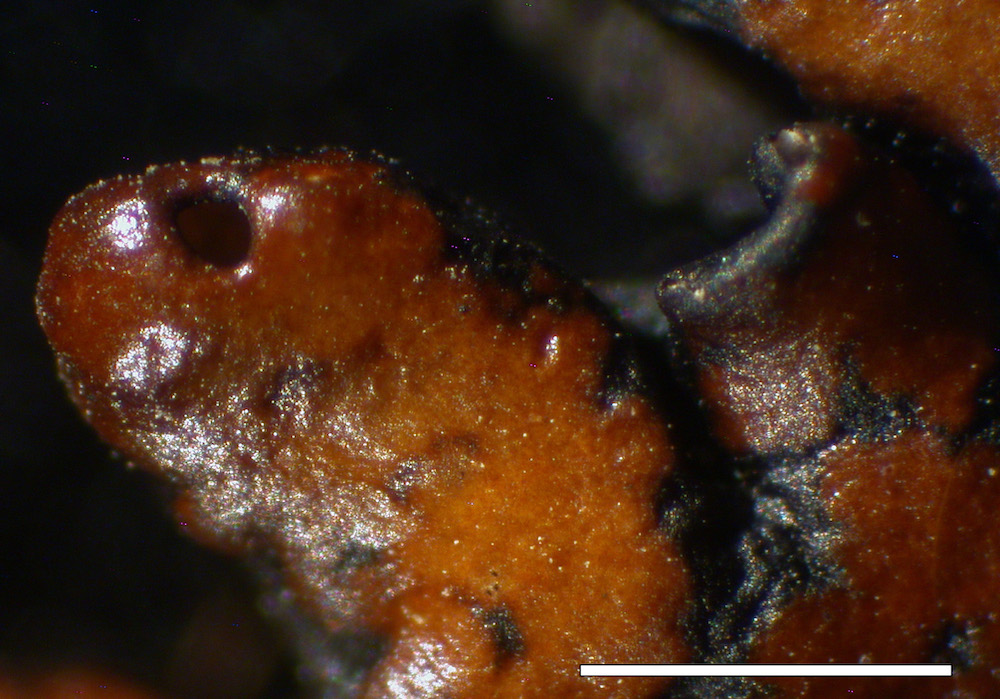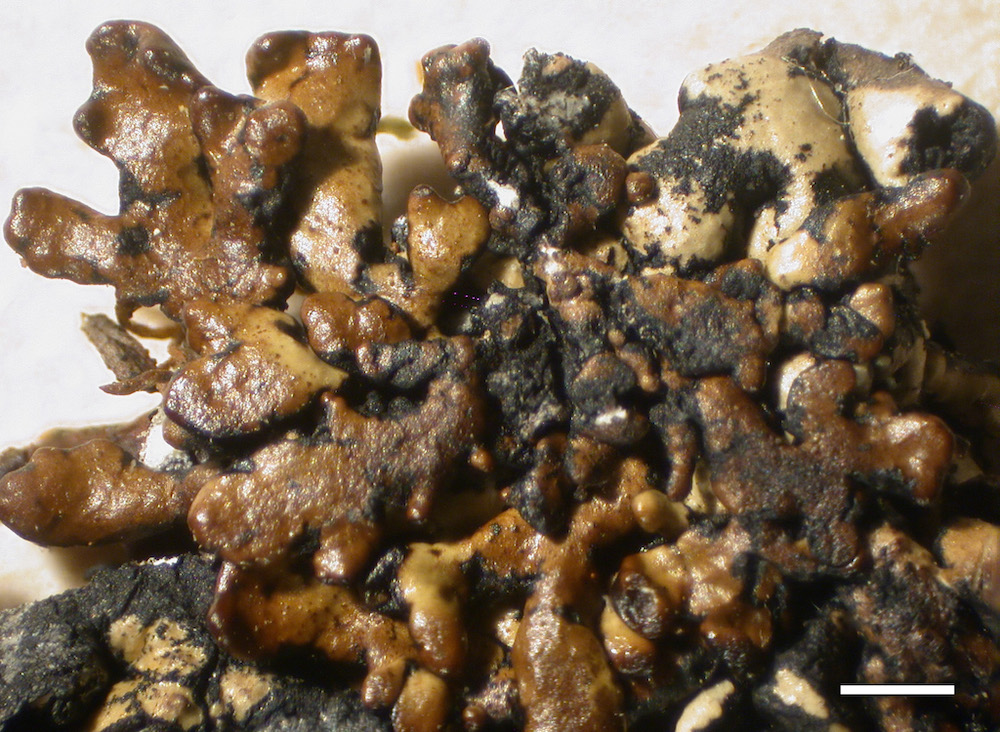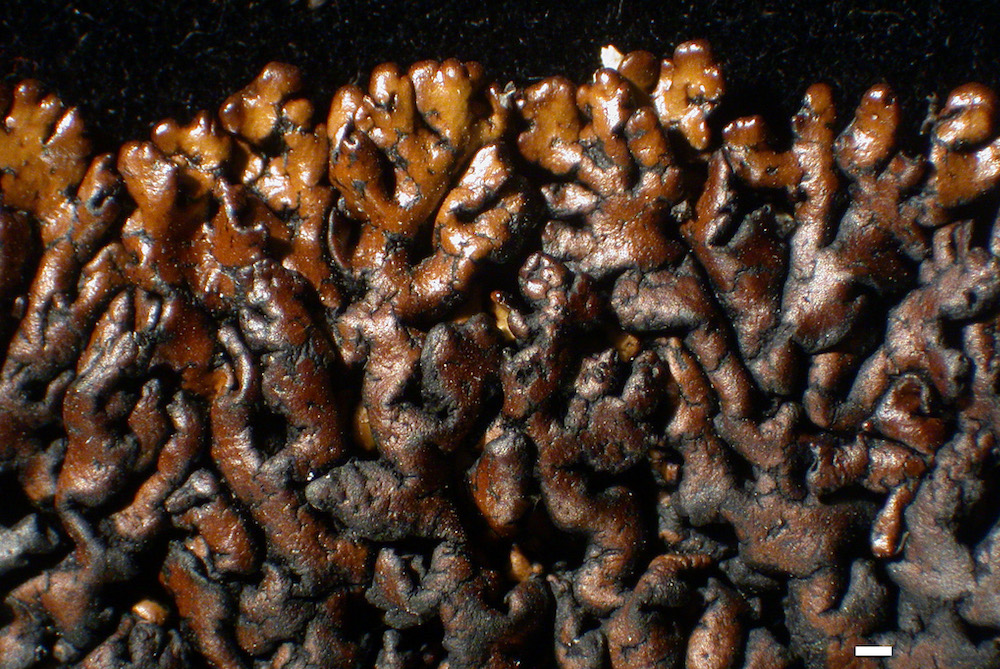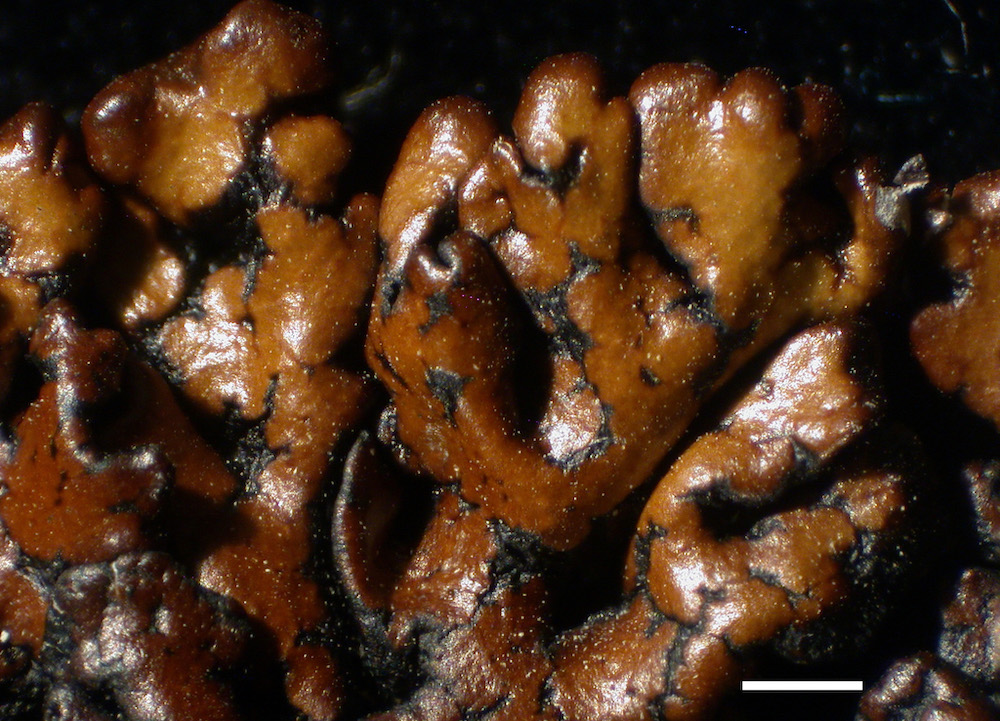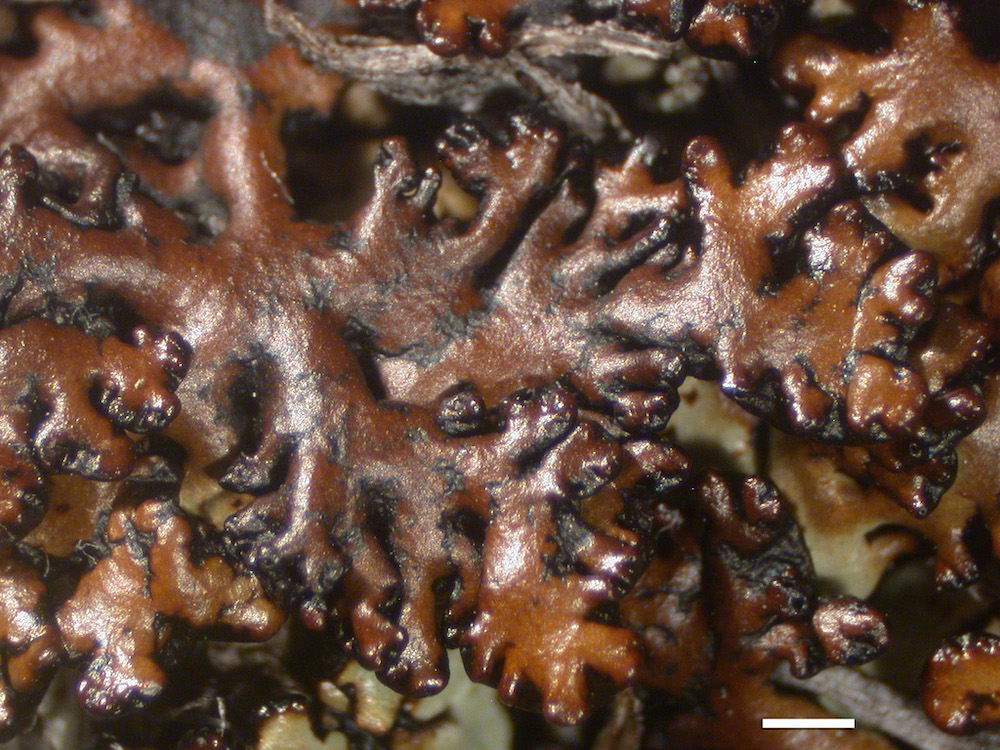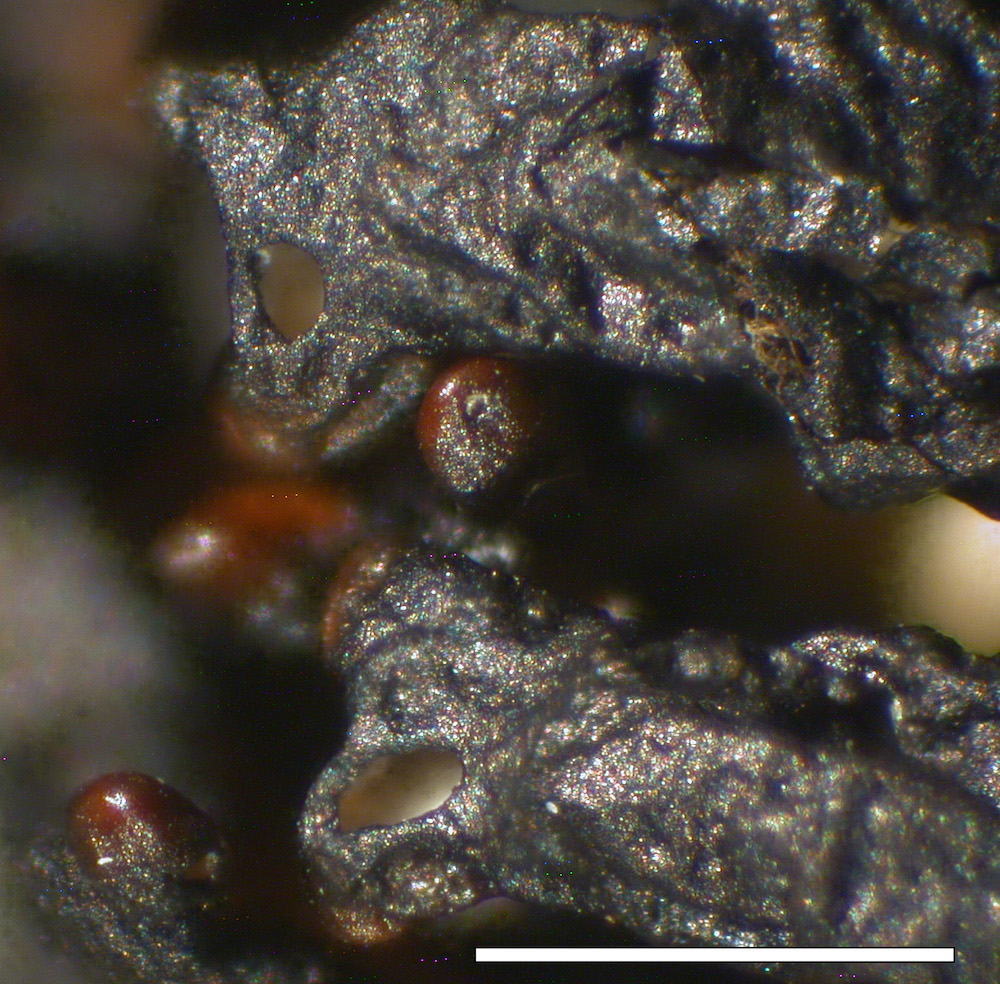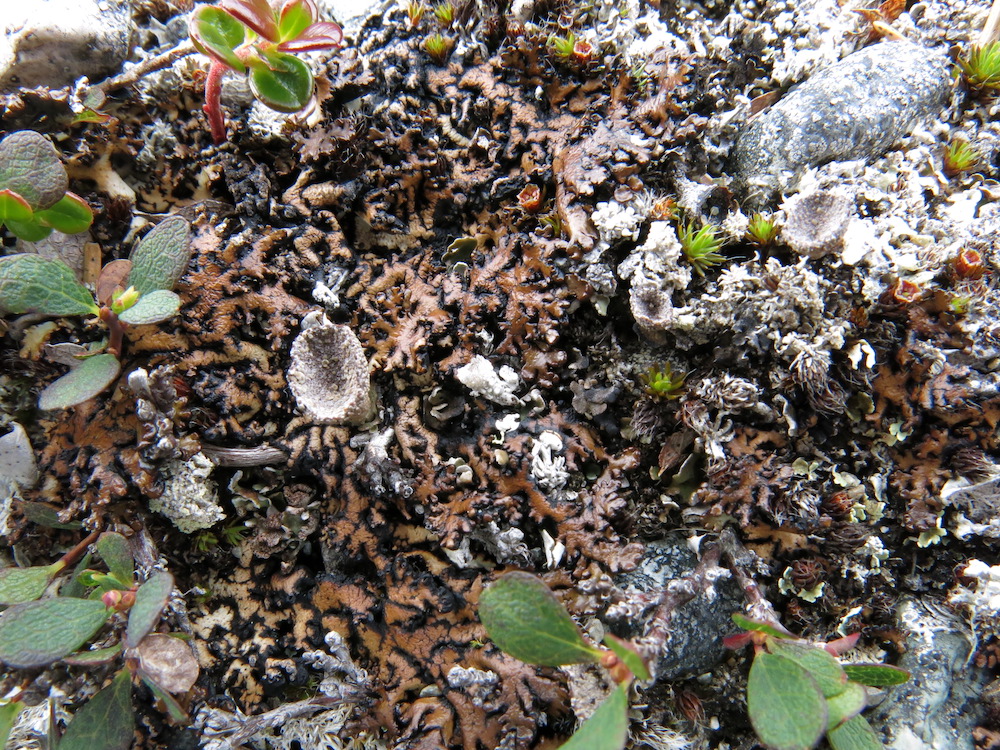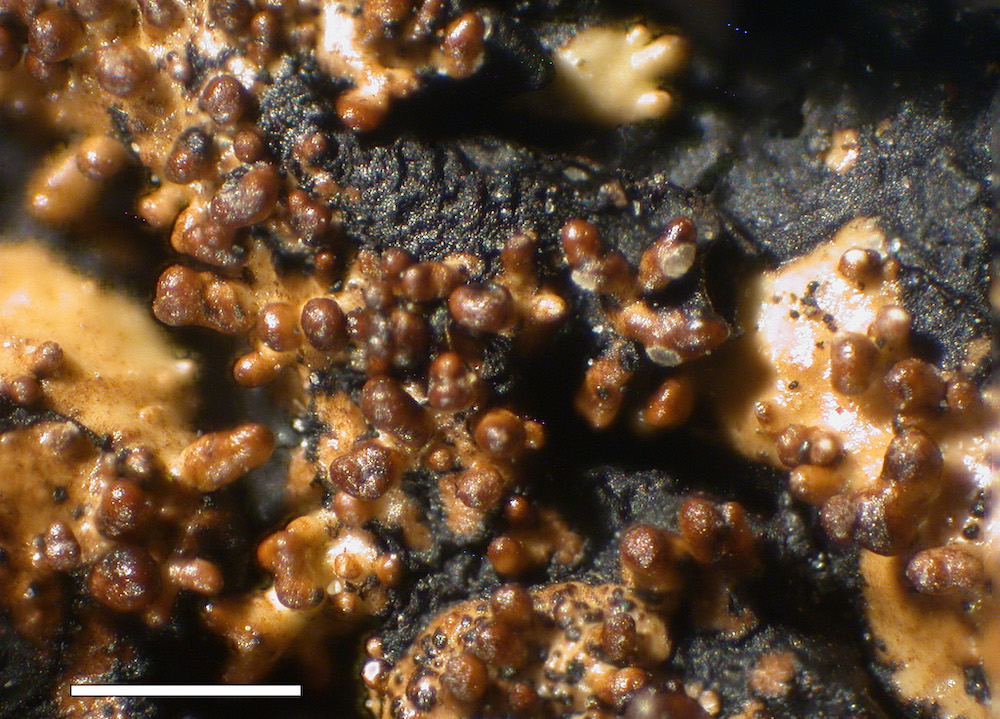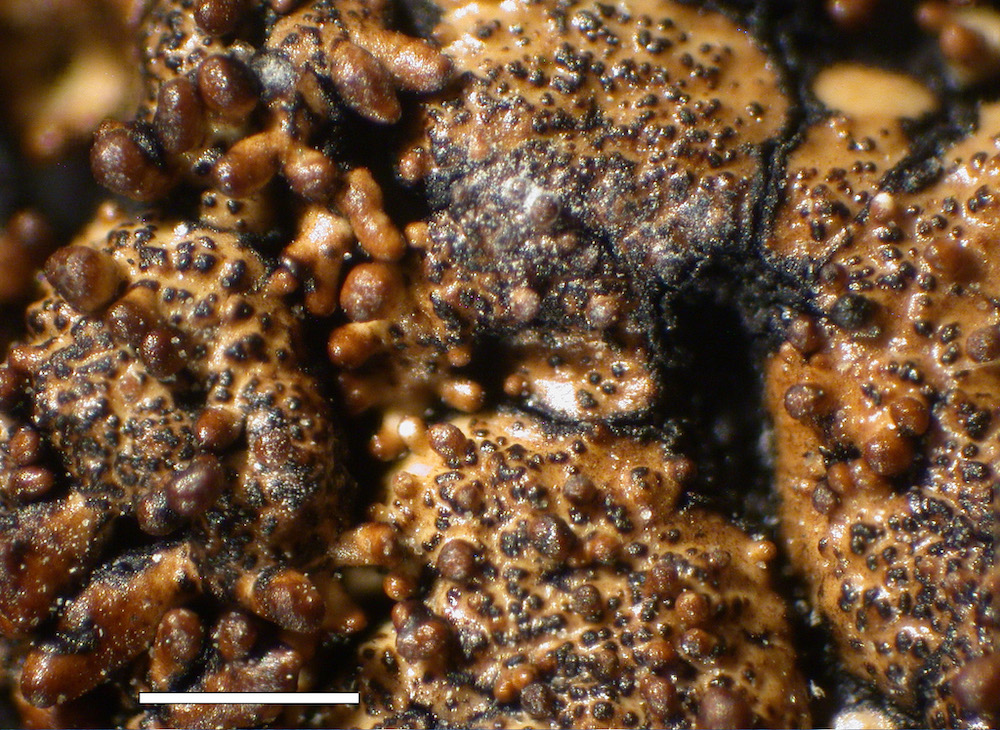Click on Characteristic name for explanation. Click on image for larger version.
Overview
| Synopsis:
| Brownish upper surface with slightly open branching, usually forming lobules, lobe tips often with tiny perforations; medulla K-, KC+ orange red, P-.
|
| Distribution:
| Islands of Arctic Ocean, Chukotsky Peninsula, Kamchatka, Arctic Europe, Asia, and N Am (Rass. 1971); arctic-alp areas from Colo to Alaska (Ohlsson 1973, w/ map), Spitzbergen, Novaya Semlya (Poelt 19__); Svalbard (Elvebakk & Hertel 1996). In Fennoscandia recorded only from the Khibiny Mts of the Kola Peninsula (Dombrovskaja 1970); report by Streimann (1986) from Papua New Guinea is likely in error.
|
| Habitat:
| arctic - alpine tundra
|
| Range:
| Southern Rocky Mountains, Arctic, Subarctic, Alpine, Northern Rocky Mountains
|
| Other Diagnostics: | Floor white, though often a thin layer over black. Specimens from NW Alaska have perforate lobe tips. Development of lobules is highly variable. Branching is more open than H. austerodes and H. bitteri. In typical form H. subobscura is easily distinguished from H. austerodes and H. bitteri by the absence of soredia, sparse to abundant lobules, and somewhat more open branching. Both H. austerodes and H. bitteri are more strongly rosette forming, with closely contiguous lobes. Although compact morphs of H. subobscura are not uncommon, the more typical form has small spaces between the lobes and a somewhat more imbricate habit. Uncommon forms of H. austerodes that lack well-developed soredia and have globose, inflated granules and lobules approach H. subobscura. These specimens can usually be separated by one or more of the following: (1) absence of perforations in the lobe tips, (2) presence of 3-hydroxyphysodic acid, or (3) some of the granules with a deteriorating cortex and becoming sorediate. In contrast, H. subobscura is often perforate, never has 3-hydroxyphysodic acid, and is never sorediate.
| | Substrate Notes: | On tundra sod, soil, less often on dead wood, rocks or moss over rock
| | Abundance in North America: | Present
| | Substrate: | Occasional
| | Host: | Salix, dwarf shrubs
| | On Rock: | Occasional
| | On Moss/Detritus/Sod: | Typically
| | Authority: | (Vainio) Poelt
| | References: | Elvebakk & Hertel (1996), Hansen & McCune (2010), Westberg et al. (2011)
| | Synonymy: | None
|
|
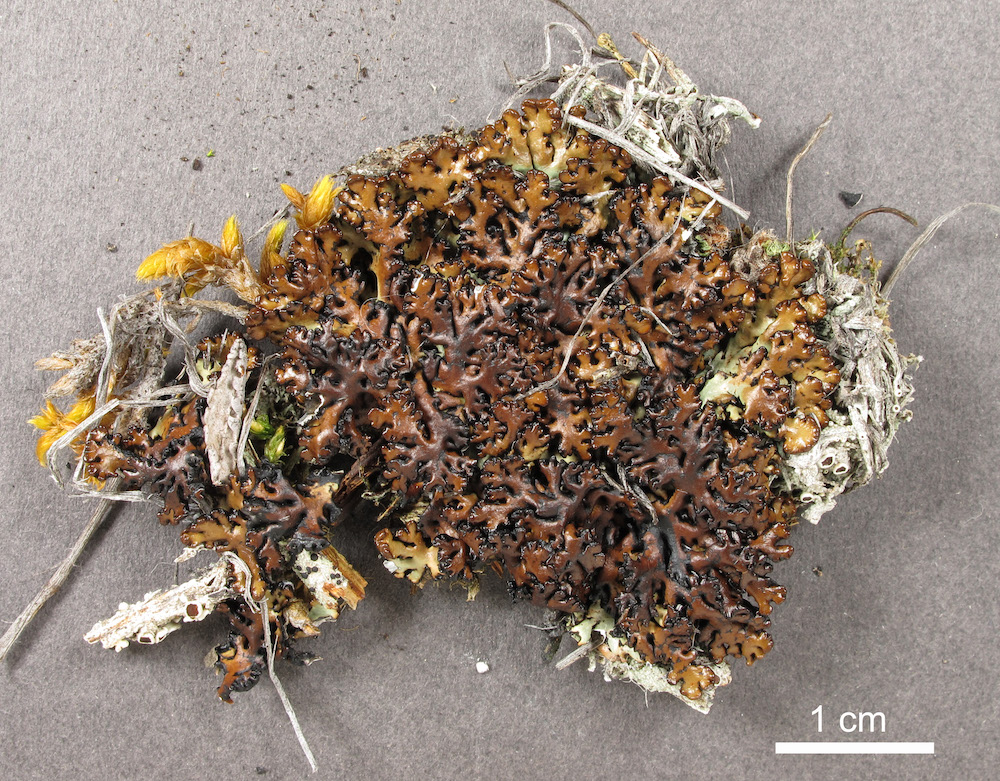
Habit
|


